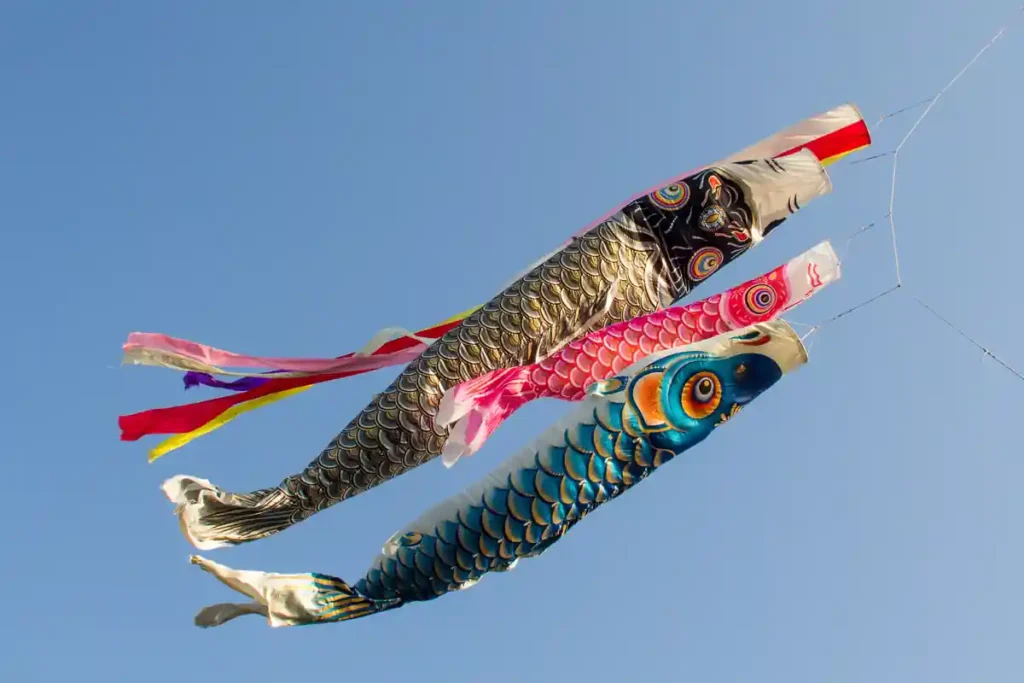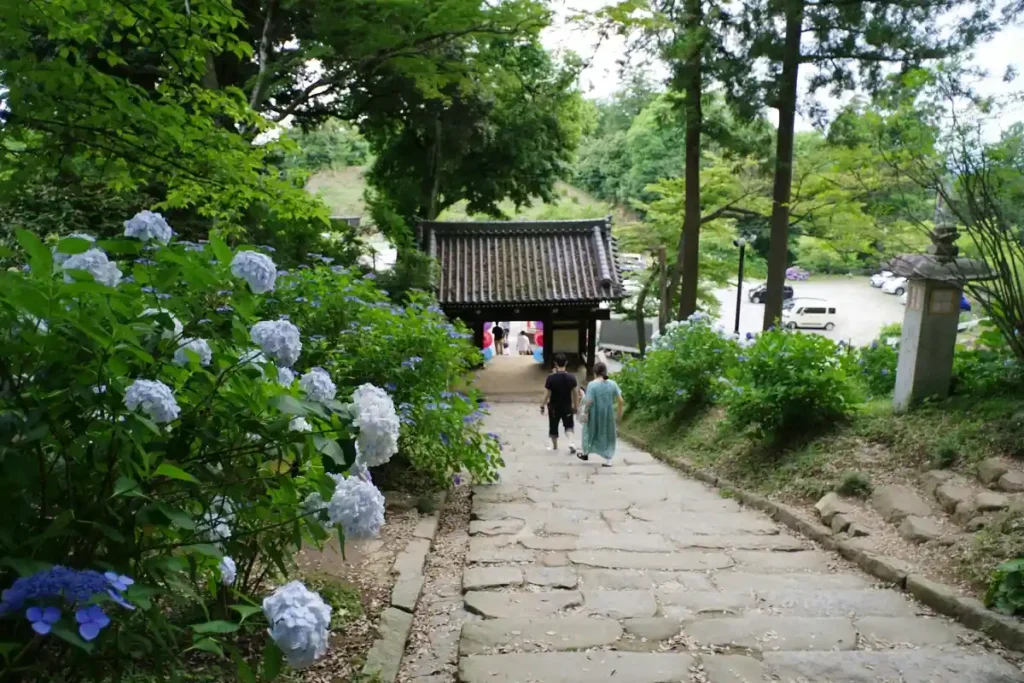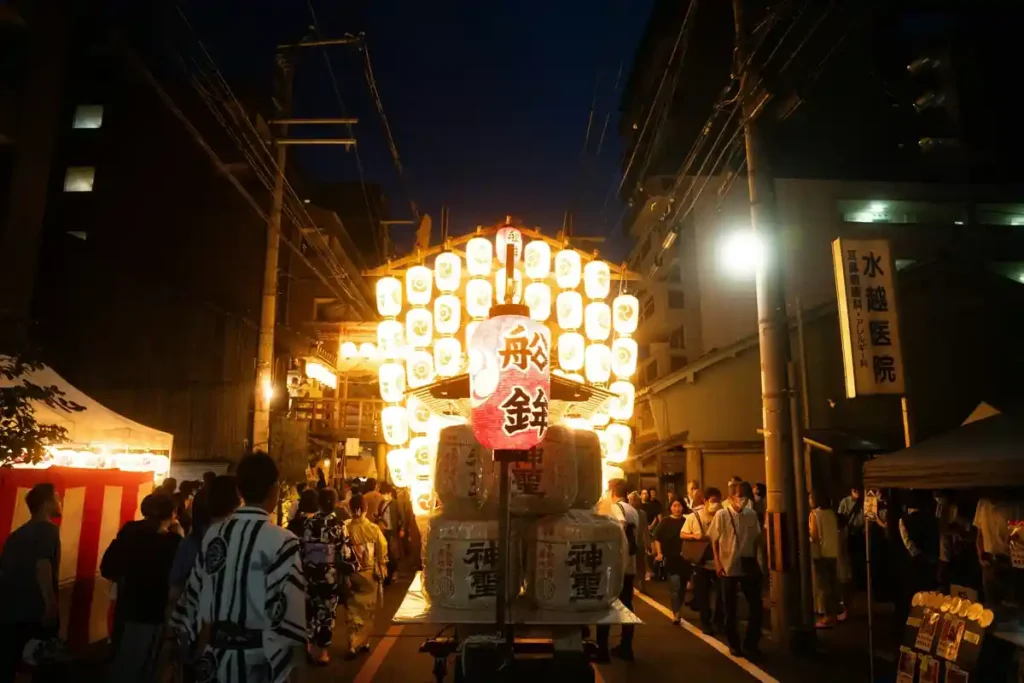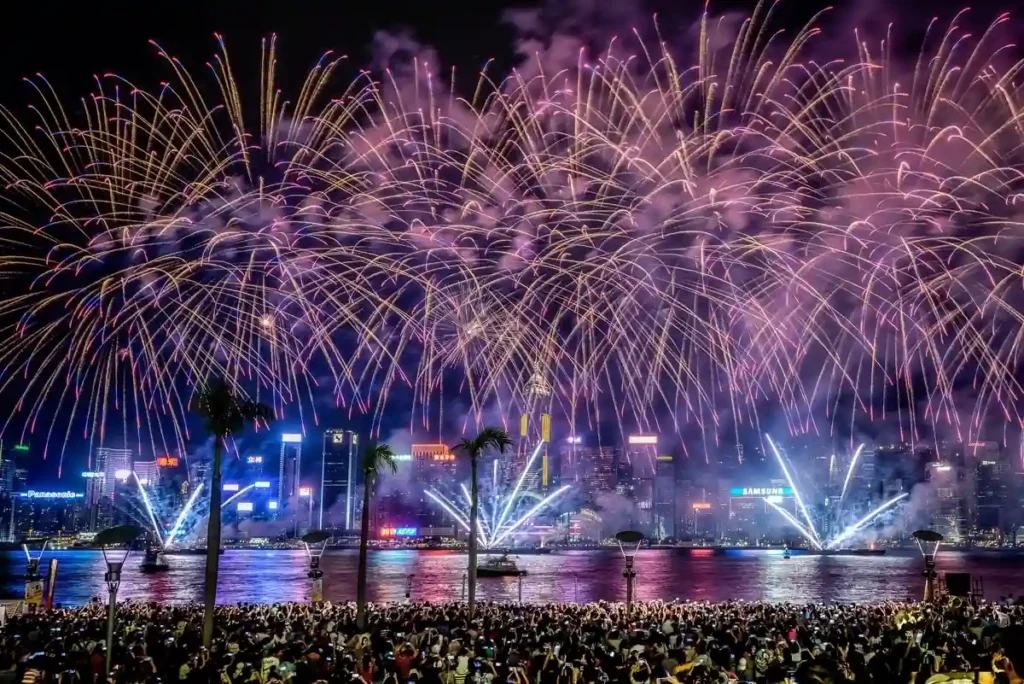Japanese Festivals by Month: A Complete Guide for Travelers
If you’re planning a trip to Japan, don’t just chase the sights—chase the seasons. After spending months researching and even attending some of these events myself, I can confidently say that Japanese festivals are one of the best ways to immerse yourself in the country’s deep-rooted traditions and vibrant local culture. From snow-covered shrines glowing with lanterns in Hokkaido to energetic summer dance parades beneath vibrant fireworks, Japanese festivals bring seasonal magic and cultural beauty all year round. Whether you’re timing your visit around cherry blossoms or hoping to stumble upon a local matsuri in a small village, this month-by-month guide will help you experience the best Japanese festivals exactly when and where they happen.
For the official festival dates, travel advisories, and tips, check the Japan National Tourism Organization (JNTO) website. It’s a reliable source for up-to-date info on what’s happening across Japan.
January Japanese Festivals – Celebrating Renewal and Good Fortune
January kicks off the year with some of the most symbolic and spiritually rich Japanese festivals. From time-honored rituals to community celebrations, these traditional Japanese festivals reflect the essence of renewal and good fortune

Shōgatsu (New Year’s Festival)
Shōgatsu marks one of Japan’s most significant festivals, observed from January 1st to 3rd as families welcome the New Year with tradition, prayer, and togetherness. It marks the beginning of the year with traditional Japanese festivals customs like hatsumode—the first shrine visit—where families pray for good fortune. Experiencing this was like stepping into the heart of Japanese traditions and festivals, filled with calm reflection and cultural unity.
Tōka Ebisu Festival (Osaka)
Held around January 10th, this vibrant matsuri is one of the most energetic Japanese festivals in Osaka. Locals visit Imamiya Ebisu Shrine to honor the deity of prosperity and collect lucky bamboo branches. As a traveler, witnessing this mix of business wishes, rituals, and celebration gave me a deeper appreciation of traditional Japanese festivals in a modern setting.
February Japanese Festivals – Snowy Wonders and Spiritual Traditions
February brings a unique blend of visual beauty and ritualistic depth with some of the most atmospheric Japanese festivals of the year. From massive snow sculptures to ancient purification customs, this month showcases both the spectacle and soul of traditional Japanese festivals.
Sapporo Snow Festival
Held in early February, the Sapporo Snow Festival in Hokkaido is one of the most iconic Japanese festivals, famous for its towering snow and ice sculptures, illuminated displays, and festive food stalls. It’s a must-see winter event that captures both artistic brilliance and community spirit—perfectly aligning with the visual grandeur often found in a Japanese lantern festival setting.
If you’re heading to Hokkaido in February, visit the Sapporo Snow Festival official page for maps, sculpture details, and event schedules.
Setsubun – Driving Out Evil Spirits
On February 3rd, Setsubun is observed across Japan as a spiritual cleansing ritual. During this traditional Japanese festival, roasted soybeans are thrown at homes and shrines while chanting “Oni wa soto, fuku wa uchi” to drive away evil spirits and welcome good fortune. It’s a beautiful example of how Japanese traditions and festivals blend symbolism with seasonal change.
March Japanese Festivals – Blossoms, Beauty, and Traditions
March welcomes the arrival of spring with some of the most graceful and cherished Japanese festivals, celebrating tradition, renewal, and seasonal beauty. From intricate doll displays to blooming cherry blossom parks, March showcases the elegance and cultural richness of Japanese festivals and traditions.
Hinamatsuri (Japanese Doll Festival)
Celebrated on March 3rd, Hinamatsuri, also known as the Japanese Doll Festival, is a traditional Japanese festival where families pray for the health and happiness of young girls. Ornamental dolls dressed in Heian-era court attire are arranged on tiered platforms in homes, symbolizing grace, protection, and tradition passed down through generations.
Hanami (Cherry Blossom Viewing)
Late March marks the beginning of Japanese spring festivals, especially in southern Japan where the cherry blossoms start to bloom. Hanami—flower viewing—is one of the most beloved Japanese festivals, where friends and families gather under blooming sakura trees for seasonal treats, music, and picnics. It’s a soulful celebration of life’s transience, honoring the delicate beauty of nature and the quiet promise of new beginnings.
April Japanese Festivals – Spring Elegance and Cultural Legacy
April brings a burst of color and culture with some of the most graceful Japanese festivals of the year. From historic parades to glowing lantern processions, this month showcases the timeless beauty of Japanese traditions and festivals.
Takayama Spring Festival (Gifu)
Held on April 14–15, the Takayama Spring Festival is considered one of the most refined traditional Japanese festivals, featuring ornate floats, elegant processions, and timeless cultural charm. Featuring ornately decorated floats, mechanical puppets, and a mesmerizing nighttime procession, it offers a visual experience reminiscent of a Japanese lantern festival. I attended this event last spring—and the elegance of the streets lit with paper lanterns left a lasting impression.
Showa Day
Observed on April 29th, Showa Day is a national holiday that honors Emperor Showa’s birthday and marks the beginning of Golden Week—a vibrant time filled with traditional Japanese festivals and cultural celebrations. While not a festival in the traditional sense, it’s a key part of Japanese festivals culture, as many people take the opportunity to visit museums, attend spring events, or reflect on Japan’s post-war history.
May Japanese Festivals – Golden Week and Celebrating Childhood
From snow-covered shrines glowing with lanterns in Hokkaido to energetic summer dance parades beneath vibrant fireworks, Japanese festivals bring seasonal magic and cultural beauty all year round. As part of Golden Week, some of the most beloved May Japanese festivals unfold—highlighting themes of growth, strength, and cultural pride through colorful rituals and time-honored parades. This is a time when families and travelers alike come together to enjoy some of the most family-focused and traditional Japanese festivals, filled with heritage, symbolism, and pageantry.

Children’s Day (Kodomo no Hi)
Children’s Day, among the most cherished Japanese festivals, is joyfully celebrated on May 5th during Golden Week, honoring children’s growth, strength, and happiness. This national holiday honors the joy, strength, and healthy development of children. All across the country, families fly koinobori—vibrant carp-shaped streamers that flutter in the wind—symbolizing resilience, success, and the hope that children grow up strong and courageous. Celebrated on May 5th as part of Children’s Day, it’s one of the most beloved and symbolic Japanese festivals, reflecting the deep cultural values found in traditional festivals in Japan.
Aoi Matsuri (Kyoto)
Celebrated each year on May 15th, Aoi Matsuri is among the most elegant Japanese spring festivals, featuring a regal procession of participants in Heian-era attire parading through Kyoto. This Kyoto tradition features a majestic procession of participants clad in vibrant Heian-era garments, making their way from the Imperial Palace to the sacred Kamo Shrines—a vivid showcase of elegance and heritage among traditional festivals in Japan. This traditional Japanese festival beautifully blends historical preservation with seasonal celebration, offering a regal experience that feels like stepping back in time.
June Japanese Festivals – Quiet Elegance in the Rain
June may bring gentle rain, but it also unveils the serene charm of Japanese festivals that celebrate the quiet elegance of the season. From sacred city parades to flower-filled temple grounds, this month highlights the serene side of Japanese traditions and festivals.
Sanno Matsuri (Tokyo)
Sanno Matsuri, celebrated in mid-June during even-numbered years, is one of Tokyo’s most esteemed traditional Japanese festivals—featuring elegant processions, sacred rituals, and a timeless connection to the city’s spiritual roots. This historic celebration features elegant floats, Shinto rituals, and parades that pass through the heart of the capital, offering a graceful contrast to the city’s usual hustle. I was lucky to see it in person—the quiet dignity of the procession through central Tokyo was unforgettable.

Hydrangea Festivals
June is also known for its stunning rainy season festivals in Japan, especially those celebrating the seasonal bloom of hydrangeas. Places like Meigetsuin Temple in Kamakura burst into color with blooming hydrangeas in rich blues and purples, attracting photographers and those seeking tranquil beauty. These events aren’t loud or crowded—they’re contemplative, floral tributes that perfectly reflect the rhythm of early summer in Japan.
July Japanese Festivals – Lanterns, Floats, and Summer Spirit
July is the heart of Japanese summer festivals, alive with rhythm, lanterns, and centuries-old tradition. From Kyoto’s grandest parade to Osaka’s riverfront fireworks, this month bursts with energy and cultural pride, showcasing some of the most beloved traditional Japanese festivals.
Gion Matsuri (Kyoto)
Celebrated throughout the month of July, Gion Matsuri in Kyoto is often regarded as the crown jewel of Japanese festivals, showcasing centuries-old traditions, grand processions, and vibrant street culture. With origins dating back over a thousand years, it features enormous wooden floats known as yamaboko, adorned with tapestries, lanterns, and ceremonial musicians. The highlight parades on July 17th and 24th turn the streets into a historic spectacle, offering a magical experience that rivals even the grandest Japanese lantern festivals.
Tenjin Matsuri (Osaka)
Held on July 24–25, Tenjin Matsuri is one of the most dynamic Japanese summer festivals, featuring river processions, traditional music, and a dazzling fireworks display that lights up Osaka’s night sky. It blends tradition with excitement—starting with land processions of drummers and dancers, followed by illuminated boat processions and a grand fireworks display over the river. I joined the crowd last summer, and the sight of glowing lanterns floating across the water was unforgettable.
August Japanese Festivals – Obon Spirits and Dance Traditions
August brings a powerful fusion of emotion and movement, showcased in some of the most vibrant and spirited Japanese festivals of the year. From honoring ancestral spirits to joining electrifying street dances, this month offers a perfect mix of reverence and celebration in the heat of Japanese summer festivals.
Obon Festival
Obon Festival in Japan, held in mid-August, is a deeply spiritual event rooted in Buddhist tradition. Families return to ancestral homes, visit cemeteries, and light lanterns to guide the spirits of loved ones back to the afterlife. One of the most moving traditional Japanese festivals, Obon also features Bon Odori—community dances performed in parks and temple grounds across the country, symbolizing reunion, gratitude, and spiritual connection.
Awa Odori (Tokushima)
Held from August 12 to 15, Awa Odori is among the most iconic Japan dance festivals in August, filling the streets of Tokushima with rhythmic music, vibrant costumes, and spirited traditional dances. Originating in Tokushima but now celebrated nationwide, it fills the streets with dancers in straw hats performing synchronized steps to the beat of shamisen and taiko drums. I joined in last year—and yes, even first-timers are encouraged to dance along. It’s a standout among Japanese summer festivals, celebrated for its high energy, vibrant processions, and the joyful atmosphere that welcomes locals and visitors alike.
Learn how to join the dance or watch the parade by visiting the Tokushima City official Awa Odori page.
September Japanese Festivals – Dance, Devotion, and Respect

Owara Kaze no Bon (Toyama)
Held from September 1–3 in the scenic mountain town of Toyama, Owara Kaze no Bon is one of the most poetic and visually mesmerizing Japanese festivals, where lantern-lit streets echo with hauntingly beautiful folk dances. Dancers dressed in flowing kimonos move slowly through narrow lantern-lit streets to appease the wind gods and pray for an abundant harvest. Revered for its atmosphere and serenity, it stands out as a hallmark of Japanese traditions and festivals, blending spiritual intent with aesthetic beauty.
Respect for the Aged Day
Celebrated on the third Monday of September, Respect for the Aged Day is a heartfelt national holiday in Japan that honors the wisdom, achievements, and longevity of the elderly. While not a festival in the traditional sense, it reflects the values celebrated in many traditional Japanese festivals—gratitude, respect, and generational connection.
October Japanese Festivals – Lanterns, Harvest, and High-Energy Traditions
As leaves turn golden and temperatures cool, autumn festivals in Japan capture the spirit of harvest and gratitude. This month blends serene beauty with thrilling excitement—ranging from glowing floats to wild races through city streets. If you’re looking to experience a dramatic contrast in Japanese festivals, October is a perfect time.
Takayama Autumn Festival (Gifu)
Held on October 9–10, the Takayama Autumn Festival is often considered one of the most elegant Japanese lantern festivals. Elaborate floats adorned with lanterns illuminate the streets at night, accompanied by traditional drumming and puppet performances It’s a beautiful representation of Japanese traditions and festivals, bringing centuries-old culture to life in the heart of Gifu.
Kishiwada Danjiri Matsuri (Osaka)
For those seeking adrenaline, Kishiwada Danjiri Matsuri delivers! In one of the most thrilling Japanese festivals, massive wooden floats (danjiri) are pulled at breakneck speed through Osaka’s narrow streets by energetic teams shouting in unison. This energetic spectacle, held in early October, is one of the most thrilling Japanese festivals in October, showcasing strength, teamwork, and festival spirit.
November Japanese Festivals – Gratitude, Growth & Family Blessings
November festivals in Japan are rooted in appreciation—of life, family, work, and the land. This month beautifully blends sacred Japanese children’s festivals with modern national holidays, offering a heartfelt glimpse into the country’s values and traditions.
Shichi-Go-San (November 15)
The Shichi-Go-San festival in Japan is a coming-of-age celebration for children aged 3, 5, and 7. As part of cherished Japanese festivals, families dress their children in traditional kimono and visit shrines to offer prayers for their health, happiness, and growth. It’s one of the most visually heartwarming and meaningful Japanese festivals and traditions, especially for travelers seeking family-focused cultural experiences.
Labor Thanksgiving Day (November 23)
Unlike Western Thanksgiving, Labor Thanksgiving Day in Japan focuses on honoring workers and the environment. Communities hold public ceremonies and events to reflect on contributions made by laborers and express gratitude for nature’s gifts. It’s a modern take on harvest celebration, deeply tied to the spirit of appreciation.
December Japanese Festivals – Winter Lights and Reflective Traditions
As the year winds down, December festivals in Japan bring both vibrant celebration and quiet reflection. From glowing floats in Saitama to the spiritual sounds of temple bells on New Year’s Eve, this month showcases the deeply rooted beauty of Japanese year-end traditions.
Chichibu Night Festival (Saitama)

Held from December 2–3, the Chichibu Night Festival is one of the most enchanting winter Japanese festivals, known for its glowing floats, fireworks, and magical atmosphere. Spectacularly illuminated floats parade through the streets, accompanied by fireworks and taiko drums. It’s a must-visit matsuri for travelers seeking Japan’s festive spirit in cooler weather.
Ōmisoka (New Year’s Eve)
On December 31st, families across Japan celebrate Ōmisoka by cleaning their homes, sharing special meals, and visiting temples. At midnight, one of the most spiritual Japanese festivals unfolds with the ritual of joya no kane, where temple bells are rung 108 times to cleanse worldly desires and welcome the new year with purity. It’s a powerful, introspective end to Japan’s festival calendar.
Timing Your Trip: When to Catch the Best Japanese Festivals
If you’re planning your trip around Japanese festivals, timing is everything. Each season offers a different side of Japan’s rich culture—whether you’re chasing cherry blossoms or dancing under fireworks.
- Spring (March–May): Experience the beauty of Japanese spring festivals, from hanami (cherry blossom viewing) to traditional parades like Aoi Matsuri.
- Summer (July–August): Immerse yourself in Japan’s summer festivals, including energetic dance celebrations like Awa Odori and dazzling fireworks at Tenjin Matsuri.
- Rainy Season (June): Discover the quiet charm of rainy season festivals in Japan, with hydrangea blooms and spiritual processions like Sanno Matsuri.
- Winter (January–February, December): Enjoy magical snow festivals in Japan and heartwarming traditions like Ōmisoka and the Chichibu Night Festival.
No matter when you go, there’s a Japanese festival waiting to surprise and inspire you.
Planning a trip during spring? Don’t miss our full guide to the Cherry Blossom Season in Japan for the best viewing spots, festivals, and bloom forecasts.
Feeling overwhelmed about where to start? Our Step-by-Step Japan Travel Guide covers everything from transport and visas to cultural tips and itinerary ideas.
Want to see wild macaques soaking in hot springs? Read The Ultimate Guide to Snow Monkey Park to find the best time to visit, how to get there, and essential tips for a smooth trip.
Traveling on a budget? Discover the Cheapest Time to Go to Japan with smart off-season travel hacks to help you save big while enjoying authentic experiences.
Frequently Asked Questions (FAQs)
1. When should I visit Japan to see the most festivals?
The ideal time to experience Japanese festivals depends on the type of celebration you’re most excited to witness. Spring is known for colorful cherry blossom events and elegant parades, summer features lively dance festivals and fireworks, while winter showcases enchanting snow festivals and year-end rituals. Every season offers its own unique lineup of traditional Japanese festivals, making it possible to find something memorable all year round.
2. Are Japanese festivals open to tourists?
Absolutely! Most Japanese festivals warmly welcome tourists. They’re a great way to experience local culture, with vibrant food stalls, traditional performances, and countless photo-worthy moments. Some festivals even invite visitors to join in the fun—whether it’s dancing, rituals, or wearing traditional attire.
3. Do Japanese festivals happen every month?
Yes, Japanese festivals take place all year long. From New Year celebrations in January to snow festivals in February, cherry blossom events in spring, and lantern-lit nights in December, there’s always a festival happening somewhere in Japan no matter the season.
4. What kind of clothing is best for enjoying festivals in Japan?
Comfort is key when attending Japanese festivals. Opt for breathable clothes and a sunhat in warmer months, and dress in layers during winter events. If you’d like a cultural experience, try wearing a yukata (a casual kimono often worn during summer festivals). For shrine or temple festivals, modest clothing shows respect.
5. Which are the most famous Japanese festivals?
Among the most iconic Japanese festivals are Gion Matsuri (Kyoto, July), Awa Odori (Tokushima, August), Sapporo Snow Festival (Hokkaido, February), and Chichibu Night Festival (Saitama, December). Each festival offers a unique lens into Japan’s cultural heritage, art, and seasonal beauty.



